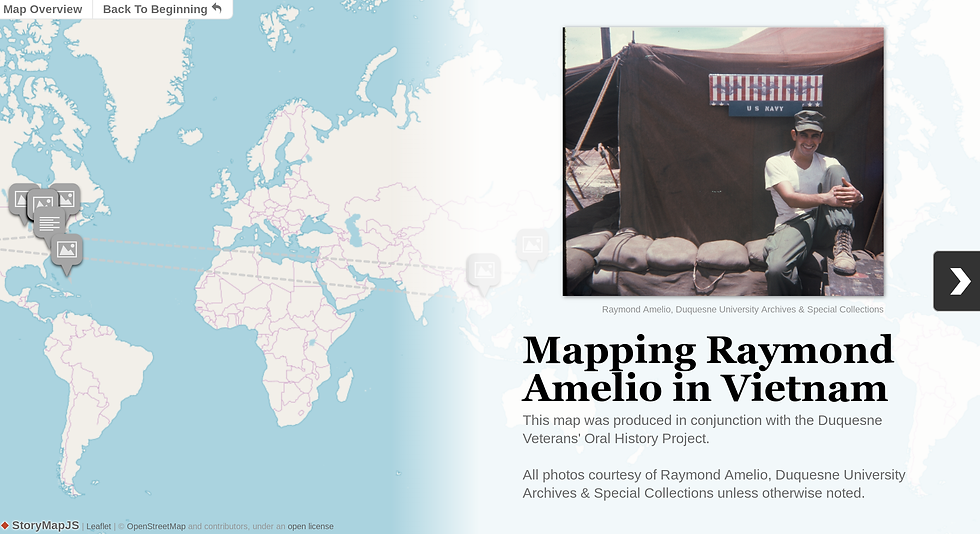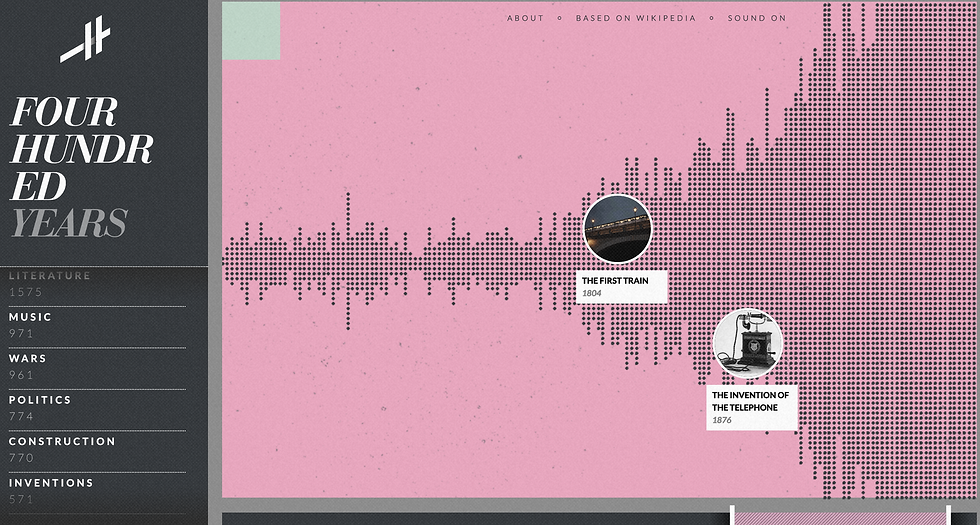Mapping Narratives
- Anna Samuels
- Oct 29, 2018
- 3 min read
During my time in the Public History program at Duquesne, I’ve had the opportunity to work closely with a variety of oral history projects. I’ve transcribed, timestamped, and edited, but up until this week, I had never mapped an oral history before. For this week’s mapping assignment, I used data that I pulled from one of the interviews that Duquesne University Archives and Special Collections oral historian Megan DeFries recorded for the Duquesne Veterans’ Oral History Project (DVOHP).
Using Northwestern University Knight Lab’s StoryMap JS tool, I mapped the geographic movements of narrator Raymond Amelio before, during, and after his service in the Vietnam war. Because my group is focusing on the DVOHP for our final project, we decided that it made sense to start mapping one narrator each (our final website will feature a StoryMap for each narrator). As a group we had decided that StoryMap worked best for our purposes because of its focus on narrative. It’s exciting to be able to represent physical movement throughout the oral history transcripts, but we didn’t want to lose sight of the transcript text or the rich images that the DVOHP narrators had provided. StoryMap JS allowed us to incorporate text and images in each mapping point resulting in a vibrant, interactive illustration of the narrators’ journeys. Additionally, our group plans to use Knight Lab’s Soundcite tool to embed inline audio clips, a tool we know will work seamlessly with StoryMap.

I created a narrative map tracing Raymond Amelio’s journey from Pittsburgh to Vietnam and back again. While my map doesn’t reveal new scholarship regarding Amelio’s oral history, it does provide an alternate, perhaps more accessible representation of his narrative. In “Visualizations and Historical Arguments,” John Theibault argues that effective visualizations must “communicate an argument or narrative beyond the meaning of the words in text.” My map accomplishes this by emphasizing the predominance of physical movement, an aspect of the military narrative that may be overshadowed. As someone who is not particularly familiar with the Vietnam war and not at all geographically-minded, I found myself almost skipping over names of towns and cities during my initial reading of Amelio’s transcript. By plotting the points he mentions, I became much more grounded in his story. The visualization of his movements and timeline amplified the physical strain of his military service in a way that the narrative alone didn’t.
Amelio’s narrative was easy to map because he adheres to a chronological timeline in his interview. When I map my other assigned narrator’s interview, I’ll need to note the dates and locations he mentions and then organize them chronologically. Though I won’t technically need to clean my data, this is still an extra step I’ll need to be aware of for future maps. Amelio provides ample information about each location he was stationed at, which made for easy plot point location. Though I was grateful for this abundance of information, I had to make decisions about which trips to highlight. For example, instead of creating individual representations of each leg of his trip to Japan, I instead plotted his movement from Pittsburgh to Okinawa and described the route in the accompanying text. I felt that too many individual stops (to represent layovers, short trips, etc) would make the map too dense by overcrowding it, affecting its transparency and making it difficult to “read.”
The greatest challenge I encountered while working on my StoryMap had less to do with the StoryMap software than with the creative and narrative choices I had to make when deciding which text to share with my readers. I had to strike a balance between informative background text and quotes pulled from the transcript while not providing too much information on each slide. Though I wanted the map to somewhat speak for itself, each location gained significance with the addition of Amelio’s memories. I kept Theibault’s ideal visualization in mind when selecting text, remembering that my map should operate in conjunction with my text selections to elevate or complicate their meaning. By choosing quotations that emphasized Amelio’s emotions, I produced a narrative map that tracks both a physical and mental journey through Vietnam.
Explore Raymond Amelio’s Vietnam StoryMap!



Comments